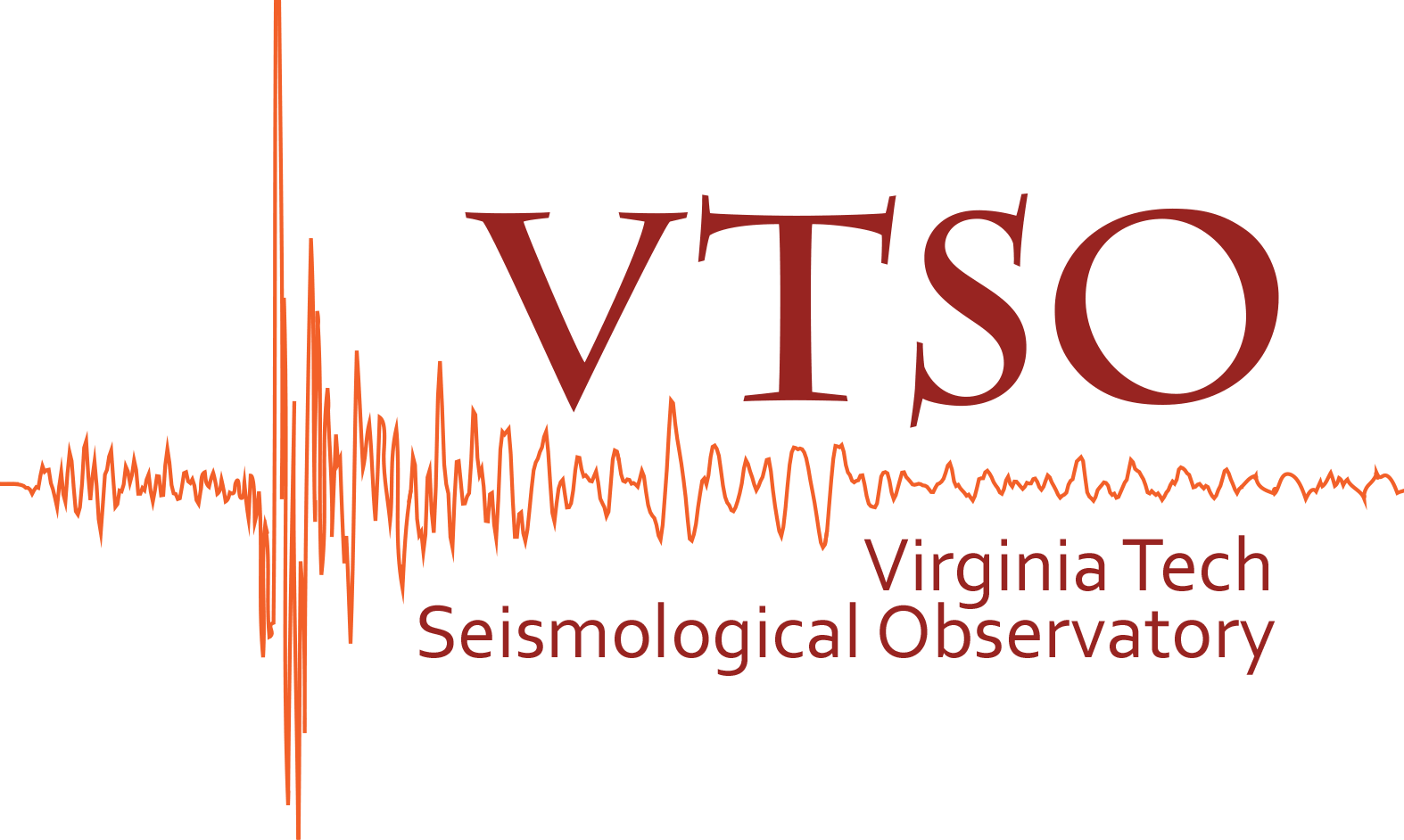The Virginia Tech Seismological Observatory
History of VTSO
Seismic station BLA was established more than a half-century ago, during the height of the Cold War, on the campus of Virginia Polytechnic Institute (VPI) in Blacksburg, Virginia, by Professor Charles E. Sears of the department of Geological Sciences. BLA was one of the initial WWSSN (Worldwide Standardized Seismic Network) stations, a global network of advanced seismic stations supported initially by the U.S. Air Force for the purpose of monitoring underground nuclear explosions. BLA and the other WWSSN stations played a leading role in the revolution of the Earth Sciences of the 1960s: the development of the theory of plate tectonics. BLA has been in continous operation since September, 1963. In the mid-1970s a regional network of seismic stations in Virginia was established by Professor Gilbert A. Bollinger with support by the U.S. Nuclear Regulatory Commission. Dr. Bollinger was the initial director of the Virginia Tech Seismological Observatory (VTSO). The staff of VTSO from the late 1970s until the late 1990s included Dr. J. Arthur Snoke (assistant director); Matthew Sibol and Martin Chapman (research associates), Jim Dixon (network technician) and several graduate research assistants. In those days of glory, the VTSO seismic network consisted of 22 stations across Virginia. The current director is Dr. Martin C. Chapman. The number of operational seismic network stations is much less than it once was, but the mission remains unchanged.
Mission
The mission of the VTSO is to collect high-quality seismic data from earthquakes in Virginia and elsewhere in the eastern part of the U.S. to investigate the geological causes of earthquakes in this intraplate setting, and to be able to predict the nature of ground motion caused by those earthquakes. The ultimate goal is to be able to accurately assess the seismic hazard.
Over the years, VTSO has assembled a large database that is important for seismic hazard assessment. Among these data products are the Southeastern U.S. Seismic Network Bulletins and the Southeastern U.S. Earthquake Catalog bulletins and catalogs. The Bulletins contain phase arrival times, hypocenters and magnitude estimates contributed by the several operators of seismic networks in the southeastern U.S. region, compiled by VTSO. The period of time covered by the SEUSSN Bulletins is mid-1977 through 2005. The Southeastern U.S. Earthquake Catalog covers the entire historical period from the late 16th century to the present. Beginning in 2006, the catalog has focused only on earthquakes in Virginia and adjacent parts of neighboring states.
People of VTSO: Current and Recent Past
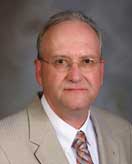
Martin Chapman
I work in two distinct topical areas. The first is the study of seismicity and tectonics of plate interiors. The second is strong-motion seismology. My goal is to combine results from both areas and contribute an improved scientific basis for assessment and mitigation of earthquake hazards, particularly for plate-interior areas such as eastern North America. There is a strong observational element in my work. I am director of the Virginia Tech Seismological Observatory (VTSO). I study the geologic causes of the earthquakes and the characteristics of seismic wave propagation in the region using data from VTSO stations as well as other seismic stations in eastern North America. As a strong-motion seismologist, I make extensive use of the world-wide collection of strong motion data from large earthquakes to characterize and predict damaging motions in the near-fault distance range in a variety of tectonic environments.
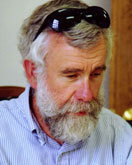
Arthur Snoke
Arthur is an emeritus faculty researcher for VTSO.
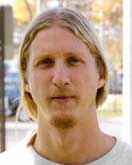
Jake Beale
I have been a Research Associate with VTSO since 2008. I have worked on various funded projects over the years, including three main topics of study: 1) Seismic monitoring of an active coal mine in southwest Virginia; 2) Studies related to understanding the seismic activity around Summerville, SC; 3) Studies related to ongoing earthquake activity in Virginia. My areas of expertise include seismic-reflection-data processing, rudimentary earthquake seismology, programming and scripting, and GIS. I have a B.S. degree in Geology and a M.S. degree in Geophysics, both from the Department of Geosciences at Virginia Tech.

Ariel Conn
Ariel's research focus was on measuring ground motion attenuation parameters in the central and south-central U.S. and the Gulf coastal region. She also worked extensively on correlations that exist between induced seismicity and wastewater disposal wells. She developed a comprehensive catalog of earthquakes and disposal wells from around the country to determine which locations are likely experiencing induced seismicity. She also worked to develop stronger communication between scientists, as well as between scientists and the general public. Much of her work can be found (hopefully easily) here on the VTSO webpage.
Ariel earned a BA in English (2001) from the University of Oregon and worked in advertising and marketing before going back to school to earn a BS in physics (2010) from Idaho State University and an MS in Geosciences (2012) from Virginia Tech. Her MS thesis is entitled Q Models for Lg Attenuation in the Central United States. Her journal publications are listed below. She is currently Director of Media Communications at Future of Life Institue.
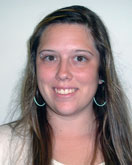
Anna Hardy
Anna's research focused on the recent seismicity occurring in the epicentral area of the 1886 Charleston, South Carolina earthquake. From August 2011-August 2012, a temporary seismic network was operated in that area by VTSO; during that time, the network detected over 100 events. Anna located the earthquakes and determined focal mechanism solutions. Her work shows that the modern seismicity in the area around Summerville, South Carolina occurs in a tabular zone that strikes to the south and dips at approximately 45 degrees to the west. Her work suggests that the tabular zone is defining the orientation of the fault responsible for the major (magnitude ~7) 1886 "Charleston" earthquake.
Anna received her BS (2012) and MS (2014) degrees in geosciences from Virginia Tech. Her MS thesis is entitled Hypocenter Locations and Focal Mechanism Solutions of Earthquakes in the Epicentral Area of the 1886 Charleston, SC, Earthquake. Her journal publications are listed below. Anna is currently working with TTL Associates, an engineering firm in Plymouth, Michagan.
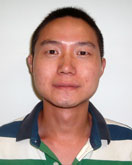
Qimin Wu
Qimin's research involved several topics. First, he conducted a detailed and comprehensive study of the aftershock sequence of the August 23, 2011 Mineral, Virginia earthquake. This involved event detection, hypocenter location, focal mechanism determination, stress field inversion and examination of the role of Coulomb stress change in the aftershock sequence. A second research topic involved quantifying the nature of geometrical spreading near the epicenter of the Mineral earthquake, using the abundant aftershock data recorded by arrays of temporary stations. His third reseach topic was determination of stress drops of the Mineral mainshock and aftershocks. A fourth research topic is a comparison of stress drops for the Mineral earthquake sequence with those of several induced earthquake sequences in Oklahoma. Qimin has made (and is continuing to make) very significant contributions to seismology in those research areas.
Qimin received his BS (2009) and MS degree (2012) in Geophysics from University of Science and Technology of China (USTC). He received his Ph.D. from Virginia Tech in early 2017. His Ph.D.dissertation is entitled Seismic Source and Attenuation Studies in the Central and Eastern United States. His journal publications are listed below. Qimin is currently a Post-Doctorial Research Associate at the University of Oklahoma.
Selected Publications
Wu, Qimin and Chapman, M.C. (2017). Stress drop estimates and source scaling of the 2011 Mineral,Virginia earthquake and aftershocks, Bulletin of the Seismological Society of America, in press, 2017.
Quiros, D.A., L.D. Brown, K.K. Davenport, J.A. Hole, A. Cabolova, C. Chen, L. Han, M.C. Chapman and W.D. Mooney (2017). Reflection imaging with earthquake sources and dense arrays, Journal of Geophysical Research, 122, 3076-3098, doi:10.10.1002/2016JB013677.
Wu, Qimin, Chapman, Martin C., Jacob N. Beale and Sharmin Shamsalsadati (2016). Near-source geometrical spreading in the central Virginia seismic zone determined from the aftershocks of the 2011 Mineral, Virginia earthquake, Bulletin of the Seismological Society of America, 106, 943-955, doi:10.1785/0120150314.
Chapman, Martin and Ariel Conn (2016). A model for Lg propagation in the Gulf Coastal Plain of the Southern United States, Bulletin of the Seismological Society of America, 106, 349-363, doi:10.1785/0120150197.
Chapman, M.C., Jacob N. Beale, Anna C. Hardy, and Qimin Wu (2016). Modern seismicity and the fault responsible for the 1886 Charleston, South Carolina earthquake, Bulletin of the Seismological Society of America, 106, 364-372, doi: 10.1785/0120150221.
Wu, Qimin, Chapman, M.C. and J. N. Beale (2015). The aftershock sequence of the 2011 Mineral, Virginia earthquake: Temporal and spatial distribution, focal mechanisms, regional stress and the role of Coulomb stress transfer, Bulletin of the Seismological Society of America, 105, 2521-2537, doi: 10.1785/0120150032.
Horton, J.W.,Jr., Chapman, M.C. and R.A. Green (2015). The 2011 Mineral, Virginia earthquake, and its significance for seismic hazards in eastern North America - Overview and synthesis, in Horton, J.W.,Jr., M.C. Chapman and R.A. Green, editors, The 2011 Mineral, Virginia, Earthquake, and Its Significance for Seismic Hazards in Eastern North America: Geological Society of America Special Paper 509, 1-26,doi:10.1130/2015.2509(01).
Chapman, M.C. (2015). Magnitude, recurrence interval and near-source ground motion modeling of the Mineral, Virginia earthquake of August 23,2011, in Horton, J.W.,Jr., M.C. Chapman and R.A. Green, editors, The 2011 Mineral, Virginia, Earthquake, and Its Significance for Seismic Hazards in Eastern North America: Geological Society of America Special Paper 509, 27-46, doi:10.1130/2015.2509(02).
Davenport, K.K., J.A. Hole, L.D. Brown, M.C. Chapman, L. Han and W.D. Mooney (2015). Aftershock imaging using a dense seismometer array (AIDA) after the 2011 Mineral, Virginia, earthquake, in Horton, J.W.,Jr., M.C. Chapman and R.A. Green, editors, The 2011 Mineral, Virginia, Earthquake, and Its Significance for Seismic Hazards in Eastern North America: Geological Society of America Special Paper 509, 273-284, doi:10.1130/2015.2509(15).
Hosseini, M., S. Pezeshk, A. Haji-Soltani and M.C. Chapman (2015). Investigation of attenuation of the Fourier amplitude in the Caribbean region, Bulletin of the Seismological Society of America, 105, 734-744, doi:10.1785/0120140006.
McNamara, Daniel E.,, H.M. Benz, R.B. Herrmann, E.A. Bergman, Paul Earle, Anne Meltzer, Mitch Withers and Martin Chapman (2014). The Mw 5.8 Virginia earthquake of August 23, 2011 and aftershock sequence: constraints on earthquake source parameters and fault geometry, Bulletin of the Seismological Society of America, 104, 40-54, doi:10.1785/0120130058.
McNamara, Daniel E., Lind Gee, Harley M. Benz and Martin Chapman (2014). Frequency-dependent seismic attenuation in the eastern United States as observed from the 2011 central Virginia earthquake and aftershock sequence, Bulletin of the Seismological Society of America, 104, 55-72, doi:10.1785/0120130045.
Chapman, M.C. (2013). On the rupture process of the 23 August 2011 Virginia earthquake, Bulletin of the Seismological Society of America, 103, 613-628, doi:10.1785/0120120229.
Chapman, M.C. and R.W. Godbee (2012). Modeling geometrical spreading and the relative amplitudes of vertical and horizontal high-frequency ground motions in eastern North America, Bulletin of the Seismological Society of America, 102, 1957-1975, doi:10.1785/0120110081.
Chapman, M.C. and J.N. Beale (2010). On the geologic structure at the epicenter of the 1886 Charleston, South Carolina earthquake, Bulletin of the Seismological Society of America, 100, 1010-1030, doi:1 0.1785/0120090231.
Long, M.D, M.H. Benoit, M.C. Chapman and S.D. King (2010). Upper mantle anisotropy and transition zone thickness beneath southeastern North America and implications for mantle dynamics, Geochemistry, Geophysics, Geosystems, 11, Q10012, doi:10.1029/2010GC003247.
Chapman, Martin (2009). A Comparison of short-period and broadband seismograph systems in the context of the seismology of the eastern United States, Seismological Research Letters, 80, 1019-1034, doi:10.1785/gssrl.80.6.1019.
Chapman, M.C. and J.N. Beale (2008). Mesozoic and Cenozoic faulting imaged at the epicenter of the 1886 Charleston, South Carolina earthquake, Bulletin of the Seismological Society of America, 98, 2533-2542, doi:10.1785/0120080923.
Chapman, M.C., J.N. Beale and R.D. Catchings (2008). Q for P-waves in the sediments of the Virginia Coastal Plain, Bulletin of the Seismological Society of America, 98, 2022-2032, doi:10.1785/0120070170.
Chapman, M.C., J.R. Martin, C.G. Olgun, and J.N. Beale (2006). Site-response models for Charleston, South Carolina, and vicinity developed from shallow geotechnical investigations, Bulletin of the Seismological Society of America 96, 467-489, doi:10.1785/0120040057.
Dunn, Meredith M. and Martin C. Chapman (2006). Fault orientation in the eastern Tennessee seismic zone: A study using the double-difference earthquake location algorithm, Seismological Research Letters, 77, no. 4, 494-504, doi:10.1785/gssrl.77.4.494.
Kim, Won-Young and Martin Chapman (2005). The 9 December 2003, central Virginia, earthquake sequence: A compound earthquake in the central Virginia seismic zone, Bulletin of the Seismological Society of America, 95, 2428-2445, doi:10.1785/0120040207.
Chapman, Martin C., Pradeep Talwani and Richard C. Cannon (2003). Ground motion attenuation in the Atlantic Coastal Plain near Charleston,South Carolina, Bulletin of the Seismological Society of America, 93, 998-1011, doi:10.1785/0120020062.
Hawman, R.B., M.C. Chapman, C.A. Powell, J.E. Clippard and H.O. Ahmed (2001). Wide-angle relection profiling with quarry blasts in the eastern Tennessee seismic zone, Seismological Research Letters, 72, no. 1, 108-122, doi:10.1785/gssrl.72.1.108.
Chapman, M.C. (1999). On the use of elastic input energy for seismic hazard analysis, Earthquake Spectra, 15, no. 4, 607-635, doi:10.1193/1.1586064.
Vlahovic, Gordana, Christine A. Powell, Martin C. Chapman and Matthew Sibol (1998).ET1D: New one-dimensional P- and S-wave velocity modelsfor the eastern Tennessee seismic zone, Seismological Research Letters, 69, no. 5, 441-449, doi:10.1785/gssrl.69.5.441.
Vlahovic, Gordana, Christine A. Powell, Martin C. Chapman and Matthew S. Sibol (1998). Joint hypocenter-velocity inversion for the eastern Tennessee seismic zone, Journal of Geophysical Research, 103, 4879-4896, doi:10.1029/97JB01891.
Chapman, M.C., C.A. Powell, G. Vlahovic and M.S. Sibol (1997). A statistical analysis of earthquake focal mechanisms and epicenter locations in the eastern Tennessee seismic zone, Bulletin of the Seismological Society of America, 87, 1522-1536.
Chapman, Martin C. (1995). A probabilistic approach to selection of ground motions for engineering design, Bulletin of the Seismological Society of America, 85, 937-942.
Powell, C.A., G.A. Bollinger, M.C. Chapman, M.S. Sibol, A.C. Johnston and R.L. Wheeler (1994). A seismotectonic model for the 300-kilometer long eastern Tennessee seismic zone, Science, 264, 686-688, doi:10.1126/science.264.5159.686.
Bollinger, G.A., Chapman, M.C. and M.S. Sibol (1993). A comparison of earthquake damage areas as a function of magnitude across the United States, Bulletin of the Seismological Society of America, 83, 1064-1080.
Bollinger, G.A., M.S. Sibol, and M.C. Chapman (1992). Maximum magnitude estimation for an intraplate-setting - Example:the Giles County,Virginia seismic zone, Seismological Research Letters, 63, 139-152,doi:10.1785/gssrl.63.2.139.
Chapman, M.C., G.A. Bollinger and M.S. Sibol (1992). Modeling delay-fired explosion spectra at regional distances, Bulletin of the Seismological Society of America, 82, 2430-2447.
Chapman, M.C., G.A. Bollinger, M.S. Sibol and D.E. Stephenson (1990). The influence of the coastal plain sedimentary wedge on strong ground motions from the 1886 Charleston, South Carolina, earthquake,doi:10.1193/1.1585589
Chapman, M.C. and M.J.B. Rogers (1989). Coda Q in the southern Applachians, Geophysical Research Letters, 16, no. 6, 531-534,doi:10.1029/GL016i006p00531.
Chapman, M.C., J.S. Snoke and G.A. Bollinger (1988). A procedure for calibrating short-period telemetered seismograph systems, Bulletin of the Seismological Society of America, 78, 2077-2088.
Bollinger, G.A., M.C. Chapman, M.S. Sibol and J.K. Costain (1985). An analysis of earthquake focal depths in the southeastern United States, Geophysical Research Letters, 12, 785-788, doi:10.1029/GL012i011p00785.
Jones, Frank B.,L.T. Long, K.H. Zelt, and M.C. Chapman (1984). Columbus, Georgia, earhtquakes of October 31, 1982, Earthquake Notes, 55 no. 2, 55-61, doi:10.1785/gssrl.56.2.55.
Chapman, M.C., and G.A. Bollinger (1984). Reliability of focal depth estimates from a small network, Earthquake Notes, 55, no. 4, 16-25, doi:10.1785/gssrl.55.4.16.
Davison, Frederick C., Martin C. Chapman, Jeffrey W. Munsey, and G.A. Bollinger (1984). A note on the Cunningham, Virginia earthquake of August 17, 1984 in the central Virginia seismic zone, Earthquake Notes, 55, no. 4, 26-33, doi:10.1785/gssrl.55.4.26.
